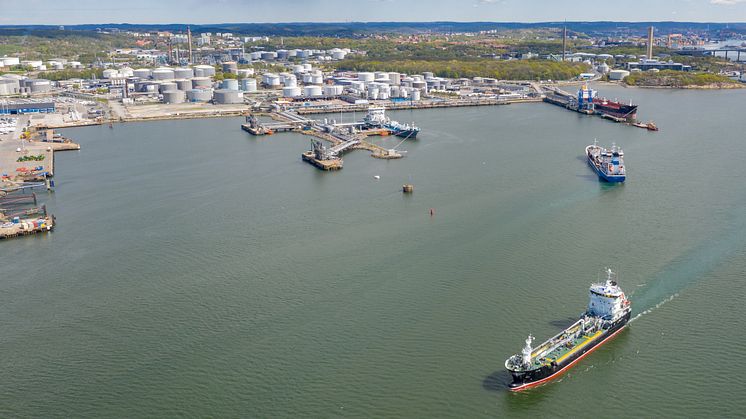
Press release -
The Port of Gothenburg will offer shoreside power for tankers from 2023
It is now confirmed that the Energy Port in Gothenburg will be next in line in the expansion of the shoreside power network at the Port of Gothenburg. The Energy Port will be the first energy port in the world with this particular offer. It is estimated that shoreside power at the Energy Port will reduce carbon emissions from vessels by 1,800 tonnes per year.
The Port of Gothenburg has set itself the ambitious target of reducing carbon emissions by 70% through to 2030, including vessels. Shipping also generates local emissions of sulphur dioxide, nitric oxide, noise, and particulate matter.
An effective means of reducing emissions from vessels at berth is shoreside power. Auxiliary engines currently powered by marine gas oil can be connected to a shoreside power supply, avoiding combustion emissions whilst the vessel is loading or discharging.
“We are about to take the next crucial step by connecting tankers to shoreside power points. Doing so in an explosive environment is more complicated, and the Port of Gothenburg looks as if it will become the first port in the world to offer this option. The hope is that other ports will follow suit, creating a basis for a shoreside power standard in explosive environments,” said Jörgen Wrennfors, production development engineer at Gothenburg Port Authority.
Several tanker operators, including a large contingent from the local island of Donsö, have a strong environmental focus. A number have switched to LNG/LBG* to power their vessels, and they are looking for further ways to mitigate the environmental impact of emissions and noise by ensuring their vessels can connect to a shoreside power supply.
“Many of the shipping companies have commissioned new vessels, and the current development has come at the right time,” said Jörgen Wrennfors.
The Port of Gothenburg has worked closely with the shipping companies to establish an interface that is globally unique for the tanker segment. Shipping companies that have shown an interest in shoreside power include Terntank, Furetank, Donsötank, Ektank, Veritas Tankers, and Tarbit Shipping.
The investment in shoreside power at the Port of Gothenburg Energy Port is partly financed by Klimatklivet, an investment support initiative for local and regional measures that reduce emissions of carbon dioxide and other climate affecting gases. The project has been granted SEK 10.7 million.
The Port of Gothenburg was one of the first ports in the world to offer shoreside power for vessels. Shoreside power is now available at the Stena Line berths at Majnabbe and Masthugget, and at two of the berths at the Gothenburg Roro Terminal at Älvsborgshamnen.
* Liquefied natural gas/liquefied biogas.
Topics
Fact file: Port of Gothenburg
The Port of Gothenburg is the largest port in the Nordic region. 30 per cent of Swedish foreign trade passes through the Port of Gothenburg as well as half of all container traffic.
The Port of Gothenburg is the only port in Sweden with the capacity to receive the world's largest container vessels and has the broadest range of shipping routes within and outside Europe. The 25 rail shuttles that depart each day mean that companies throughout Sweden and Norway have a direct, environmentally smart link to the largest port in the Nordic region. The Port of Gothenburg has terminals for oil, cars, ro-ro, containers and passengers.



